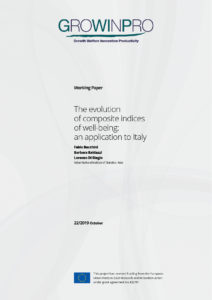Prompted by the work of the Stiglitz’s Commission, the growing attention to the beyond-GDP measures has led to the inclusion of well-being indicators in the policy agenda. This innovation asks for an improvement of the existing methodology to produce composite indices, in order to correctly address spatial and temporal comparisons as well as tackling for unbalances. Following a short review of the main international experiences, this paper will investigate these issues considering the methodology currently adopted to normalize and aggregate the selected individual indicators included in the Italian well-being. We study the properties of this methodology looking at different normalization and aggregation approaches and underlining some drawbacks, mostly due to the way in which time dimension, normalization, aggregation and unbalance adjustment interplay with each other. We argue that new efforts should be done to overcome these drawbacks extending the research agenda toward new non-compensatory approaches. Testing for time series methods, such as dynamic factor models could represent another important step forward. Meanwhile the introduction of a more traditional framework for the composite indicators for Italian well-being could be considered.

 The evolution of composite indices of well-being: an application to Italy
The evolution of composite indices of well-being: an application to Italy